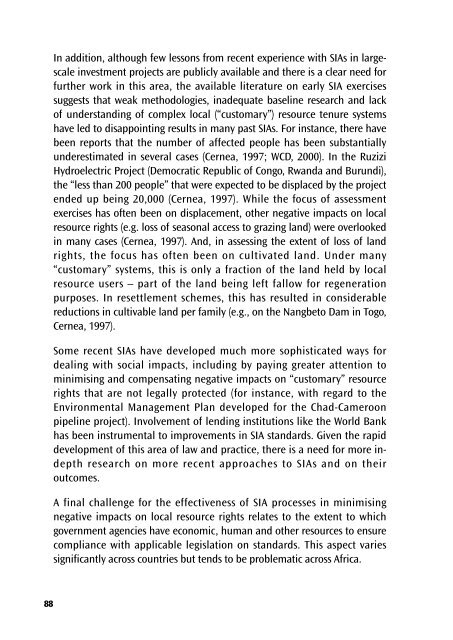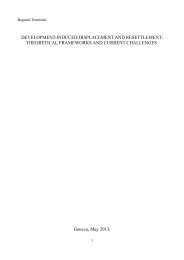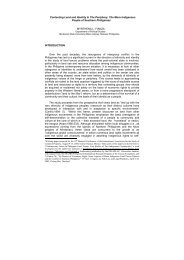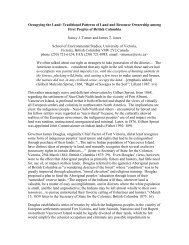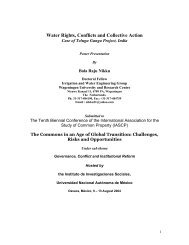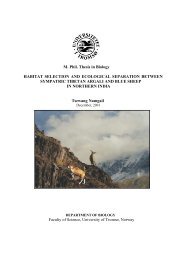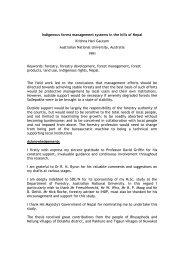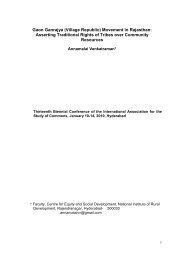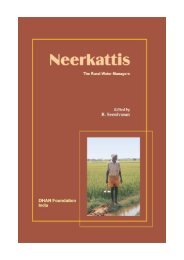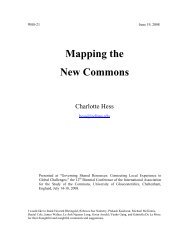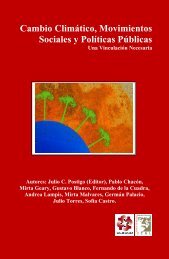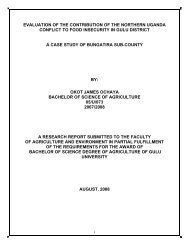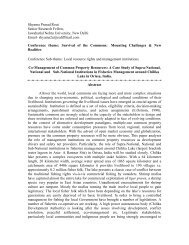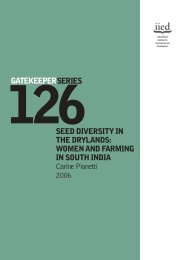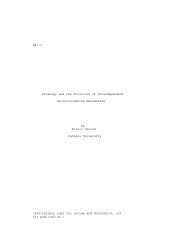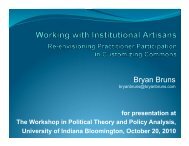Legal empowerment for local resource control
Legal empowerment for local resource control
Legal empowerment for local resource control
Create successful ePaper yourself
Turn your PDF publications into a flip-book with our unique Google optimized e-Paper software.
88<br />
In addition, although few lessons from recent experience with SIAs in largescale<br />
investment projects are publicly available and there is a clear need <strong>for</strong><br />
further work in this area, the available literature on early SIA exercises<br />
suggests that weak methodologies, inadequate baseline research and lack<br />
of understanding of complex <strong>local</strong> (“customary”) <strong>resource</strong> tenure systems<br />
have led to disappointing results in many past SIAs. For instance, there have<br />
been reports that the number of affected people has been substantially<br />
underestimated in several cases (Cernea, 1997; WCD, 2000). In the Ruzizi<br />
Hydroelectric Project (Democratic Republic of Congo, Rwanda and Burundi),<br />
the “less than 200 people” that were expected to be displaced by the project<br />
ended up being 20,000 (Cernea, 1997). While the focus of assessment<br />
exercises has often been on displacement, other negative impacts on <strong>local</strong><br />
<strong>resource</strong> rights (e.g. loss of seasonal access to grazing land) were overlooked<br />
in many cases (Cernea, 1997). And, in assessing the extent of loss of land<br />
rights, the focus has often been on cultivated land. Under many<br />
“customary” systems, this is only a fraction of the land held by <strong>local</strong><br />
<strong>resource</strong> users – part of the land being left fallow <strong>for</strong> regeneration<br />
purposes. In resettlement schemes, this has resulted in considerable<br />
reductions in cultivable land per family (e.g., on the Nangbeto Dam in Togo,<br />
Cernea, 1997).<br />
Some recent SIAs have developed much more sophisticated ways <strong>for</strong><br />
dealing with social impacts, including by paying greater attention to<br />
minimising and compensating negative impacts on “customary” <strong>resource</strong><br />
rights that are not legally protected (<strong>for</strong> instance, with regard to the<br />
Environmental Management Plan developed <strong>for</strong> the Chad-Cameroon<br />
pipeline project). Involvement of lending institutions like the World Bank<br />
has been instrumental to improvements in SIA standards. Given the rapid<br />
development of this area of law and practice, there is a need <strong>for</strong> more indepth<br />
research on more recent approaches to SIAs and on their<br />
outcomes.<br />
A final challenge <strong>for</strong> the effectiveness of SIA processes in minimising<br />
negative impacts on <strong>local</strong> <strong>resource</strong> rights relates to the extent to which<br />
government agencies have economic, human and other <strong>resource</strong>s to ensure<br />
compliance with applicable legislation on standards. This aspect varies<br />
significantly across countries but tends to be problematic across Africa.


